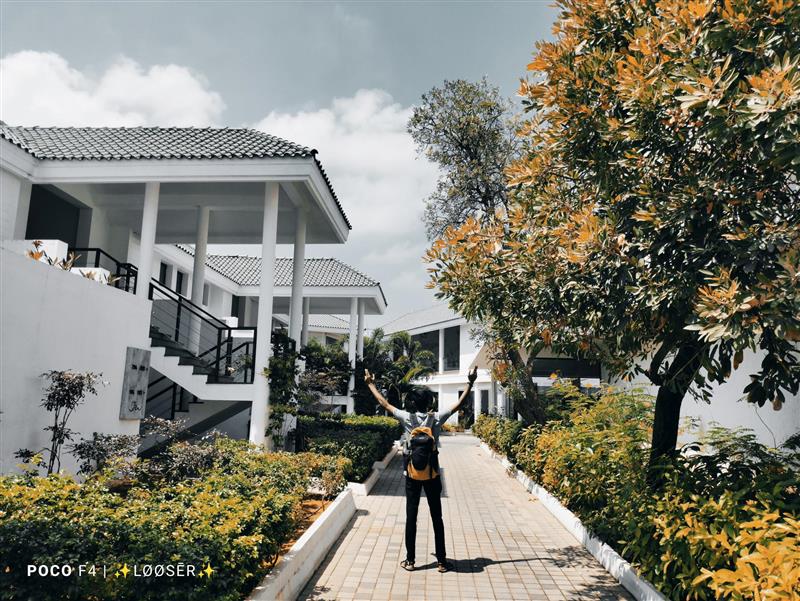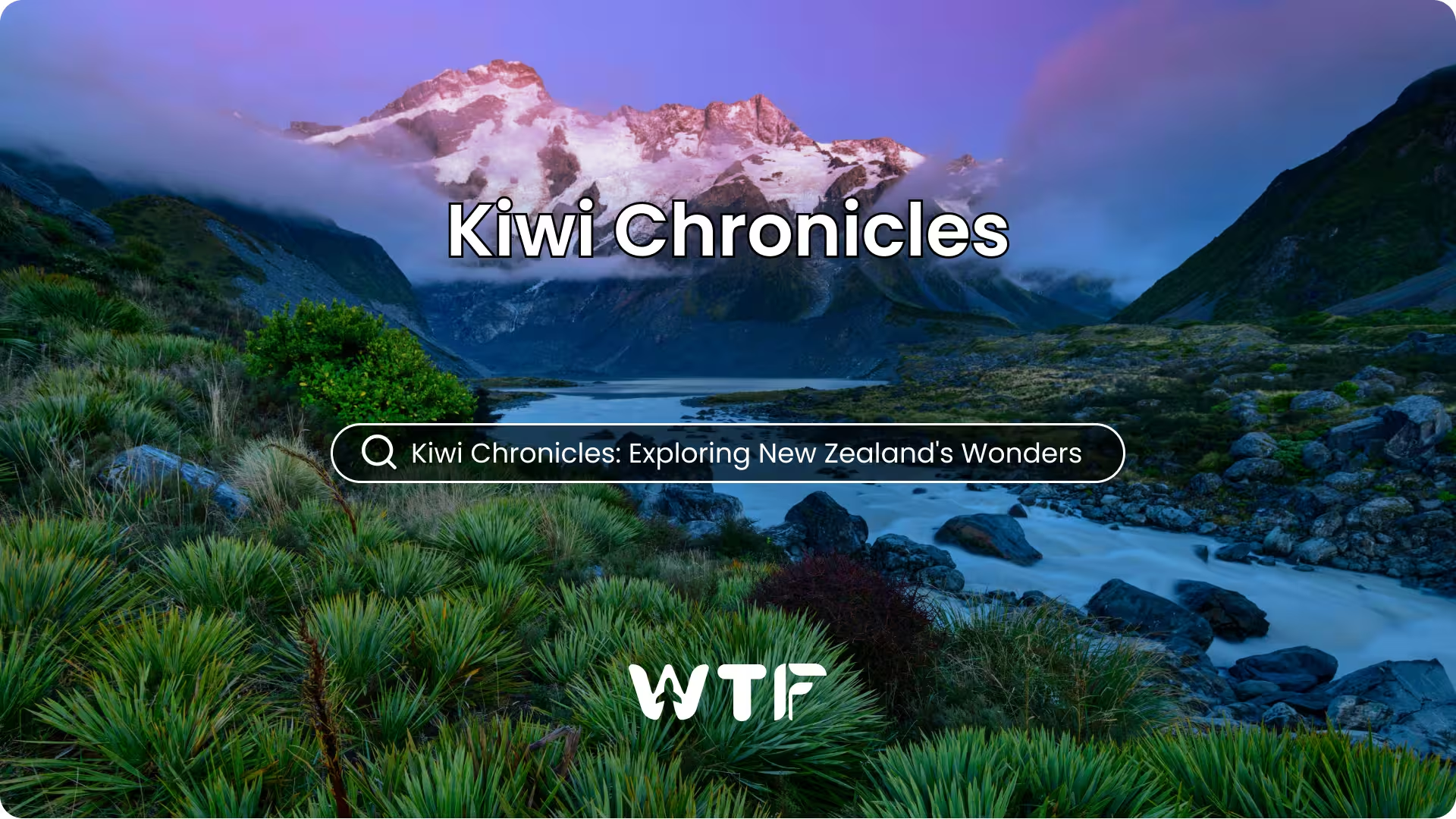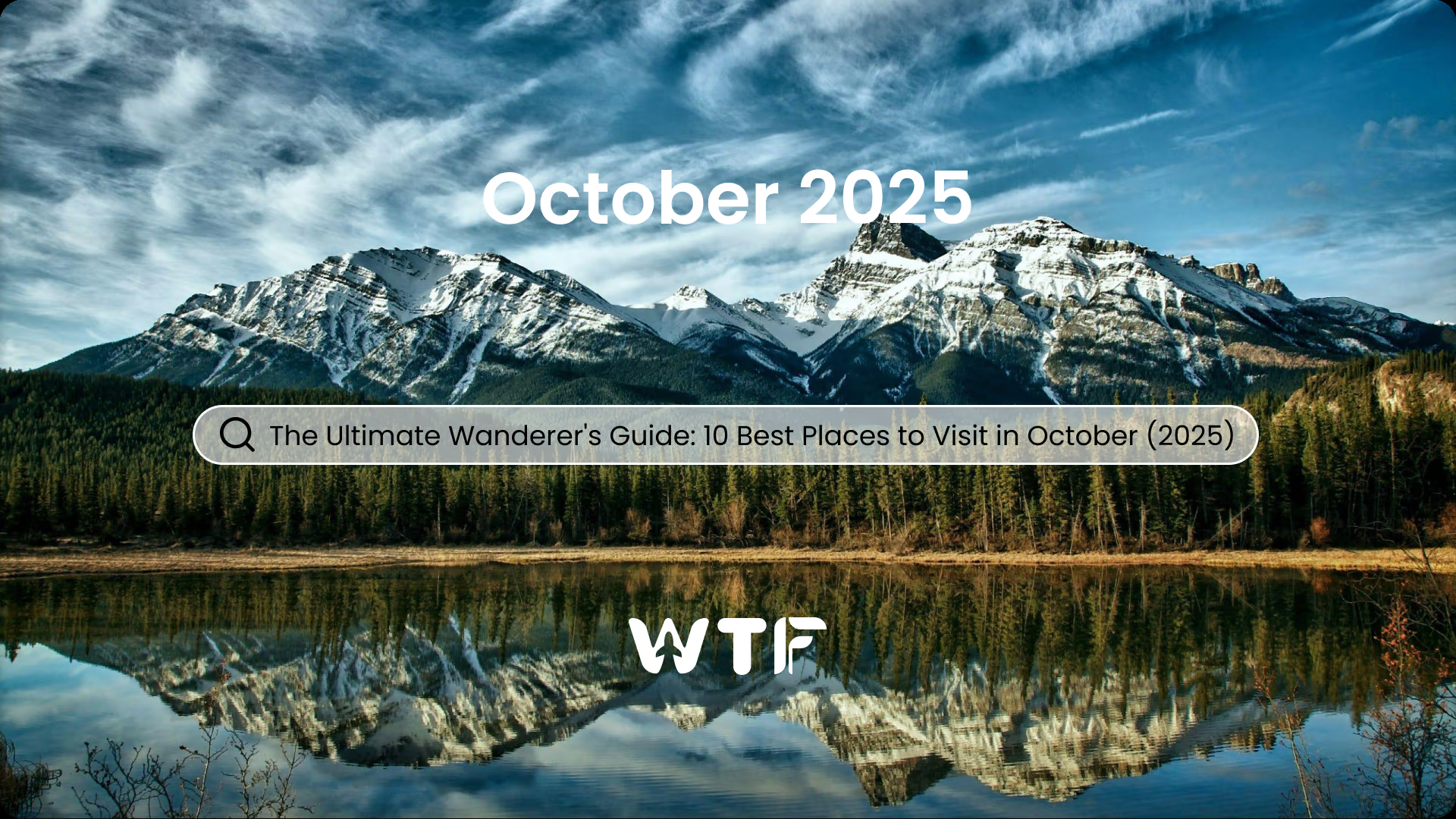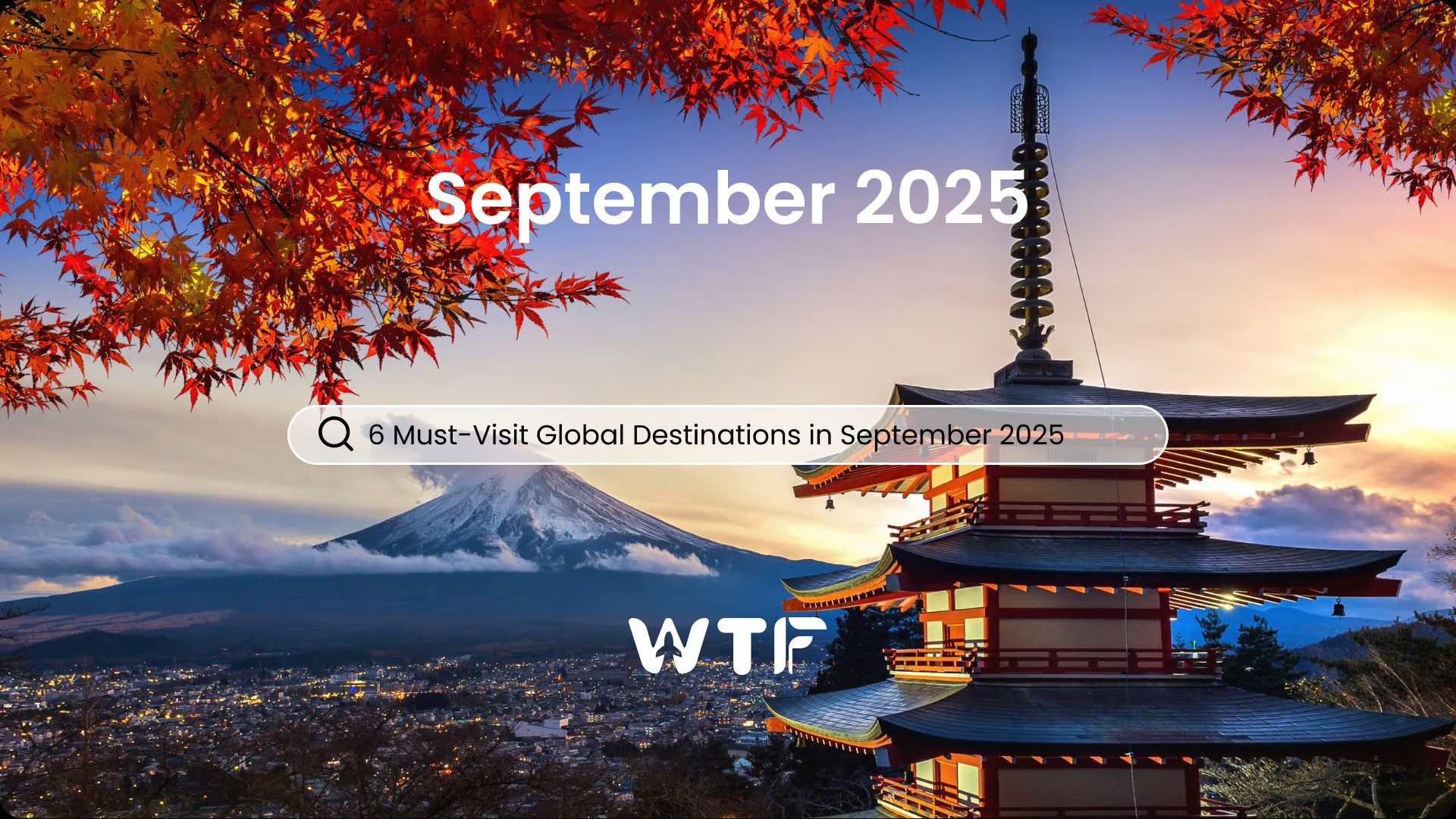Welcome to the enchanting realm of New Zealand, a land where nature’s majesty and Maori traditions intertwine to create an unparalleled travel experience. Nestled in the southwestern Pacific Ocean, this island nation is renowned for its breathtaking landscapes, from the snow-capped peaks of the Southern Alps to the pristine beaches and verdant forests. What sets New Zealand apart is its remarkable diversity – you can embark on thrilling adventures, exploring fjords and glaciers one day and relaxing on golden beaches the next. The vibrant cities, such as Auckland and Wellington, pulse with culture and offer a taste of the modern Kiwi lifestyle. Let’s dive into it!
Geographical and Historical Details:
Geographical Information:
- Location:
- New Zealand is located in the southwestern Pacific Ocean, comprising two main islands: the North Island and the South Island, along with numerous smaller islands.
- It is situated southeast of Australia, approximately 2,000 kilometers (about 1,200 miles) southeast of Australia’s eastern coast.
- Terrain:
- The country boasts diverse landscapes, including mountain ranges, coastal plains, fjords, and volcanic plateaus.
- The Southern Alps, running along the spine of the South Island, are home to Aoraki/Mount Cook, the country’s highest peak.
- Fiordland, on the southwest corner of the South Island, features stunning fjords, including the famous Milford Sound.
- Climate:
- New Zealand experiences a variety of climates due to its diverse geography.
- The North Island generally has a milder climate, while the South Island tends to be cooler.
- Coastal areas are influenced by the ocean, leading to mild temperatures, while inland areas can have more extreme temperature variations.
- The country experiences four distinct seasons, with summer from December to February and winter from June to August.
Historical Information:
- Periodic History:
- Polynesian Settlement: The Maori, Polynesian settlers, arrived in New Zealand around the 13th century, establishing a rich cultural heritage.
- European Exploration: The 17th-century saw European exploration, with Abel Tasman being one of the first Europeans to reach New Zealand in 1642.
- Medieval History:
- Maori Culture: The indigenous Maori people developed a unique culture with intricate carvings, a strong oral tradition, and distinct social structures.
- Colonization: The 19th century witnessed British colonization, leading to the signing of the Treaty of Waitangi in 1840 between the British Crown and Maori chiefs, shaping the nation’s foundation.
- Modern History:
- World Wars: New Zealand played a role in both World Wars, contributing troops and resources.
- Social and Economic Development: Post-World War II, the country underwent significant social and economic changes, evolving into a modern welfare state.
- Nuclear-Free Policy: In the 1980s, New Zealand adopted a nuclear-free policy, reinforcing its commitment to peace and environmental conservation.
Exploring the Must-Visit Tourist Destinations in New Zealand
1. Title: Fiordland National Park – Nature’s Wonderland
Fiordland National Park, a UNESCO World Heritage site, enchants visitors with its dramatic fjords, towering peaks, and lush rainforests. Milford Sound and Doubtful Sound are iconic highlights, offering unparalleled natural beauty and a haven for wildlife.
How to Get There from Wellington (Capital):
From Wellington, take a flight to Queenstown Airport. Public buses connect Queenstown to Te Anau, the gateway to Fiordland. From Te Anau, buses or organized tours can reach Milford Sound and Doubtful Sound.
Other Transportation:
Private transport options include renting a car from Queenstown or joining guided tours that offer transportation.
Transportation Cost:
- Public Transport: Flights from Wellington to Queenstown can range from $100 to $300 NZD. Bus tickets from Queenstown to Te Anau may cost around $30 to $50 NZD.
- Private Transport: Renting a car can range from $50 to $100 NZD per day, and guided tours may vary from $150 to $300 NZD.
Must-Do Activities:
- Cruise through Milford Sound or Doubtful Sound, absorbing the breathtaking landscapes.
- Hike the Milford Track for a multi-day adventure in the heart of Fiordland.
Entrance Fee:
There is no specific entrance fee for Fiordland National Park, but fees may apply for guided tours or specific activities.
2. Title: Tongariro National Park – Volcanic Majesty
Tongariro National Park boasts volcanic peaks, turquoise lakes, and unique landscapes. The Tongariro Alpine Crossing is a famous trek, offering stunning views of Mount Ngauruhoe, also known as Mount Doom from “The Lord of the Rings.”
How to Get There from Wellington (Capital):
From Wellington, take a train or bus to National Park Village. Public buses or shuttles can transport visitors to various trailheads within the park.
Other Transportation:
Private transport options include renting a car from Wellington or joining guided tours that offer transportation.
Transportation Cost:
- Public Transport: Train or bus tickets from Wellington to National Park Village may range from $40 to $80 NZD. Shuttles to trailheads can cost around $20 to $40 NZD.
- Private Transport: Renting a car can range from $50 to $100 NZD per day, and guided tours may vary from $100 to $200 NZD.
Must-Do Activities:
- Hike the Tongariro Alpine Crossing for breathtaking volcanic landscapes.
- Explore Taranaki Falls and Tama Lakes for additional scenic beauty.
Entrance Fee:
There is no entrance fee for Tongariro National Park, but transportation and guided tour fees may apply.
3. Title: Queenstown – Adventure Capital of New Zealand
Nestled on Lake Wakatipu’s shores, Queenstown is renowned for adrenaline-pumping activities, stunning landscapes, and a vibrant atmosphere. It’s a hub for bungee jumping, skiing, and outdoor adventures.
How to Get There from Wellington (Capital):
Fly from Wellington to Queenstown Airport. Public buses or shuttles are available from the airport to the town center.
Other Transportation:
Private transport options include renting a car from Queenstown or using local taxis.
Transportation Cost:
- Public Transport: Flights from Wellington to Queenstown can range from $100 to $300 NZD. Local bus or shuttle rides may cost around $10 to $20 NZD.
- Private Transport: Renting a car can range from $50 to $100 NZD per day.
Must-Do Activities:
- Bungee jump from the historic Kawarau Bridge or experience the thrill of a jet boat ride.
- Enjoy panoramic views from the Skyline Gondola and explore nearby hiking trails.
Entrance Fee:
Fees may apply for specific activities or attractions in Queenstown, such as the Skyline Gondola or adventure experiences.
4. Title: Rotorua – Geothermal Wonderlands
Rotorua is a geothermal wonderland with bubbling mud pools, spouting geysers, and thermal springs. The cultural richness of the Maori people adds a unique dimension to this captivating destination.
How to Get There from Wellington (Capital):
Fly from Wellington to Rotorua Airport. Public buses or shuttles are available from the airport to the town center.
Other Transportation:
Private transport options include renting a car from Rotorua or using local taxis.
Transportation Cost:
- Public Transport: Flights from Wellington to Rotorua can range from $100 to $300 NZD. Local bus or shuttle rides may cost around $10 to $20 NZD.
- Private Transport: Renting a car can range from $50 to $100 NZD per day.
Must-Do Activities:
- Explore the Te Puia Geothermal Park and witness the Pohutu Geyser.
- Experience Maori culture through traditional performances and a Hangi feast.
Entrance Fee:
Fees may apply for specific attractions in Rotorua, such as geothermal parks or cultural experiences.
5. Title: Abel Tasman National Park – Coastal Paradise
Abel Tasman National Park is a coastal paradise with golden beaches, turquoise waters, and lush forests. It’s a haven for kayaking, hiking, and enjoying the serenity of New Zealand’s stunning coastline.
How to Get There from Wellington (Capital):
From Wellington, take a ferry to Picton. Public buses or shuttles can then transport visitors to Nelson, the gateway to Abel Tasman. Water taxis or boat services provide access to the park.
Other Transportation:
Private transport options include renting a car from Nelson or joining guided tours that offer transportation.
Transportation Cost:
- Public Transport: Ferry tickets from Wellington to Picton may range from $50 to $100 NZD. Bus or shuttle rides from Picton to Nelson may cost around $20 to $40 NZD.
- Private Transport: Renting a car can range from $50 to $100 NZD per day, and guided tours may vary from $100 to $200 NZD.
Must-Do Activities:
- Kayak along the stunning coastline and explore the Abel Tasman Coast Track.
- Relax on the golden beaches and take in the breathtaking views of the Tasman Sea.
Entrance Fee:
There is no specific entrance fee for Abel Tasman National Park, but fees may apply for guided tours or water taxi services.
New Zealand’s Hidden Treasures: 5 Exclusive Local Gems Off the Beaten Path
1. Title: Aoraki Dark Sky Reserve – Celestial Serenity
Nestled within Aoraki / Mount Cook National Park, the Aoraki Dark Sky Reserve offers unparalleled stargazing opportunities. Recognized for its minimal light pollution, it’s a celestial haven where locals escape to witness the Southern Hemisphere’s night sky in all its glory.
How to Get There from Wellington (Capital): From Wellington, fly to Christchurch Airport. Public buses or shuttles connect Christchurch to Mount Cook Village, situated within the national park.
Other Transportation: Private transport options include renting a car from Christchurch for a scenic road trip.
Transportation Cost:
- Public Transport: Flights from Wellington to Christchurch can range from $100 to $300 NZD. Bus or shuttle rides from Christchurch to Mount Cook Village may cost around $40 to $60 NZD.
- Private Transport: Renting a car can range from $50 to $100 NZD per day.
Must-Do Activities:
- Stargaze at the Mount John Observatory within the reserve, offering guided tours for astronomy enthusiasts.
- Embark on day hikes around Aoraki / Mount Cook, surrounded by the Southern Alps’ breathtaking landscapes.
Entrance Fee: There may be fees for specific astronomy tours or activities, but accessing the dark sky reserve itself is generally free.
2. Title: Wharariki Beach – Secluded Coastal Beauty
Tucked away in the northwest corner of the South Island, Wharariki Beach is a hidden gem featuring colossal sand dunes, limestone cliffs, and iconic sea stacks. Its remote location ensures a serene escape from the tourist trail.
How to Get There from Wellington (Capital): From Wellington, fly to Nelson Airport. Public buses or rental cars can then take you to Takaka, the gateway to Golden Bay. From Takaka, continue by car to Wharariki Beach.
Other Transportation: Private transport options include renting a car from Nelson or Takaka for flexibility in exploring the surrounding areas.
Transportation Cost:
- Public Transport: Flights from Wellington to Nelson can range from $100 to $300 NZD. Bus rides from Nelson to Takaka may cost around $30 to $50 NZD.
- Private Transport: Renting a car can range from $50 to $100 NZD per day.
Must-Do Activities:
- Explore the stunning arches and caves at low tide on Wharariki Beach.
- Hike along coastal tracks and witness a seal colony near Cape Farewell.
Entrance Fee: There is no specific entrance fee for Wharariki Beach, as it is part of the public conservation land.
3. Title: Lake Tekapo’s Hidden Hot Springs – Alpine Oasis
Situated near Lake Tekapo, these hidden hot springs offer a tranquil escape surrounded by snow-capped mountains. Locals cherish this natural oasis for its peaceful ambiance and therapeutic thermal waters.
How to Get There from Wellington (Capital): From Wellington, fly to Christchurch Airport. Public buses or shuttles connect Christchurch to Lake Tekapo. From Lake Tekapo, local transport or short walks can lead to the secret hot springs.
Other Transportation: Private transport options include renting a car from Christchurch for a scenic drive through the Canterbury region.
Transportation Cost:
- Public Transport: Flights from Wellington to Christchurch can range from $100 to $300 NZD. Bus or shuttle rides from Christchurch to Lake Tekapo may cost around $30 to $50 NZD.
- Private Transport: Renting a car can range from $50 to $100 NZD per day.
Must-Do Activities:
- Soak in the hidden hot springs, surrounded by breathtaking alpine scenery.
- Visit the nearby Church of the Good Shepherd and enjoy stargazing at the Dark Sky Reserve.
Entrance Fee: Entrance to the hot springs may have a nominal fee for maintenance, but it is generally affordable.
4. Title: Karangahake Gorge – Historic Hiking Haven
Karangahake Grge, nestled in the Coromandel Peninsula, is an unspoiled haven blending natural beauty with historical significance. Locals frequent its walking trails, offering glimpses of abandoned gold mines and lush landscapes.
How to Get There from Wellington (Capital): From Wellington, take a train or bus to Paeroa, a nearby town. Public buses or taxis can then transport you to Karangahake Gorge.
Other Transportation: Private transport options include renting a car from Wellington or Paeroa for flexibility in exploring the Coromandel region.
Transportation Cost:
- Public Transport: Train or bus tickets from Wellington to Paeroa may range from $40 to $80 NZD. Local bus or taxi rides from Paeroa to Karangahake Gorge may cost around $10 to $20 NZD.
- Private Transport: Renting a car can range from $50 to $100 NZD per day.
Must-Do Activities:
- Hike the gorge’s trails, exploring relics of gold mining history and crossing swing bridges.
- Marvel at the stunning Owharoa Falls and enjoy picnics along the Ohinemuri River.
Entrance Fee: There is no specific entrance fee for Karangahake Gorge, making it an accessible destination for nature and history enthusiasts.
5. Title: The Catlins – Coastal Wilderness Retreat
The Catlins, located on the southeastern tip of the South Island, is a coastal wilderness renowned for its rugged landscapes, hidden waterfalls, and diverse wildlife. Locals cherish its untouched beauty and serene atmosphere.
How to Get There from Wellington (Capital): From Wellington, fly to Dunedin Airport. Public buses or rental cars can then take you to The Catlins.
Other Transportation: Private transport options include renting a car from Dunedin for flexibility in exploring The Catlins’ remote corners.
Transportation Cost:
- Public Transport: Flights from Wellington to Dunedin can range from $100 to $300 NZD. Bus rides from Dunedin to The Catlins may cost around $20 to $40 NZD.
- Private Transport: Renting a car can range from $50 to $100 NZD per day.
Must-Do Activities:
- Explore hidden gems like Nugget Point, Purakaunui Falls, and the Cathedral Caves.
- Witness local wildlife, including seals, penguins, and native birds.
Entrance Fee: There is no specific entrance fee for The Catlins, as it encompasses public conservation land with free access for visitors.
Culture and Activities
Outdoor Activities:
- Hiking:
- Key Locations: Fiordland National Park, Abel Tasman National Park, Tongariro National Park.
- Highlight Trails: Milford Track, Abel Tasman Coast Track, Tongariro Alpine Crossing.
- Experience: Immerse yourself in New Zealand’s stunning landscapes by trekking through diverse terrains, from fjords to volcanic craters.
- Bungee Jumping:
- Key Locations: Queenstown (Kawarau Bridge, Nevis Bungy), Taupo (Taupo Bungy).
- Experience: Take a leap of faith from iconic bungee jumping spots, enjoying the adrenaline rush against breathtaking backdrops.
- Water Sports:
- Key Locations: Queenstown (Lake Wakatipu), Rotorua (Lake Rotorua), Bay of Islands.
- Activities: Kayaking, jet boating, white-water rafting, and sailing.
- Experience: Navigate pristine waters and experience the thrill of water sports amidst New Zealand’s natural beauty.
Cultural Experiences:
- Maori Cultural Performances:
- Key Locations: Rotorua (Te Puia, Tamaki Maori Village), Wellington (Te Papa Museum).
- Highlights: Traditional Maori haka performances, cultural storytelling, and interactive experiences.
- Experience: Gain insights into the rich Maori heritage through captivating performances and engaging with Maori customs.
- Traditional Food:
- Key Ingredients: Hangi (earth oven-cooked food), kumara (sweet potato), paua (abalone), and kai moana (seafood).
- Dining Experience: Attend a traditional Maori hangi feast, where food is cooked underground, offering a unique culinary experience.
- Locations: Rotorua, where cultural centers often combine performances with traditional Maori cuisine.
Transport: How to get there and roam around?
Welcome to the enchanting landscapes of New Zealand, where the journey is as captivating as the destination. For budget backpackers and everyday commuters alike, understanding the intricacies of transportation is essential. From arriving in the country to everyday modes of travel, let’s embark on an exploration of New Zealand’s transportation system.
Getting to New Zealand: Best Routes and Modes of Transport
1. Arriving in New Zealand:
- Best Route: Most international travelers reach New Zealand by flying into Auckland, Wellington, or Christchurch. Direct flights or layovers in major cities like Sydney, Singapore, or Dubai are common.
- Mode of Transport: International flights are the primary means of getting to New Zealand.
2. Costs for Travellers:
- Flight Costs: Prices vary based on the departure city, season, and how early you book. Flights from major hubs like Sydney or Los Angeles to Auckland can range from $800 to $1,500 USD.
Modes of Transport and Passes for Travellers
1. Public Transport:
- Buses: Inter-city buses connect major towns, providing an affordable option for budget travelers. Services like InterCity and ManaBus offer flexible passes for multiple journeys.
- Trains: Scenic train routes run through picturesque landscapes. The KiwiRail Scenic Journeys pass is popular among tourists.
2. Car Rentals:
- Costs: Renting a car can be affordable, with daily rates starting at $30 to $50 NZD. Companies like JUCY and GO Rentals offer budget-friendly options.
- Quality: Roads are well-maintained, providing a smooth driving experience. Rental cars are a great way to explore at your pace.
3. Domestic Flights:
- Air New Zealand Pass: The Air New Zealand Explorer Pass allows travelers to hop between destinations at discounted rates.
Costs for New Zealanders and Tourists
1. Public Transport:
- New Zealanders: Locals may benefit from subsidized public transport, making it an affordable choice for daily commuting.
- Tourists: Public transport costs for tourists are generally reasonable, with buses and trains offering budget-friendly options.
2. Domestic Flights:
- New Zealanders: Residents may have access to discounted rates on domestic flights.
- Tourists: Tourist rates for domestic flights can be higher but are essential for reaching remote destinations.
Quality of Travel in Each Transportation Mode
1. Public Transport:
- Quality: Buses and trains provide a comfortable and scenic journey. While buses offer flexibility, trains showcase the country’s stunning landscapes.
2. Domestic Flights:
- Quality: Airlines like Air New Zealand maintain high safety standards, and domestic flights offer efficient travel between major cities. Weather conditions can impact flight schedules.
3. Car Rentals:
- Quality: Rental cars provide flexibility, allowing travelers to explore off-the-beaten-path destinations. Roads are generally in good condition, but some remote areas may have gravel roads.
Difficulties Using New Zealand Transportation System
1. Limited Connectivity in Remote Areas:
- While major cities and towns have efficient transport options, reaching remote areas may pose challenges due to limited connectivity.
2. Weather-Related Delays:
- New Zealand’s weather can be unpredictable, leading to occasional delays or disruptions in flights and ferry services.
3. Limited Night Services:
- Public transport options may have limited services during the night, especially in smaller towns, affecting travel plans for those relying on late-night transportation.
Budget Travel Guide to New Zealand: Exploring Aotearoa Affordably
1. Visa Process and Restrictions:
- Visa Process: Check New Zealand’s immigration website for the most up-to-date information on visa requirements. American and Schengen visa holders often enjoy a visa waiver for up to 90 days.
- Specialty: Ensure your passport is valid for at least three months beyond your planned departure from New Zealand.
2. Things We Shouldn’t Do When We Go There:
- Environmental Respect: Avoid littering or disturbing wildlife. New Zealanders take pride in their pristine landscapes, so follow the “leave no trace” principle.
- Cultural Sensitivity: Respect Maori customs and sacred sites. Seek permission before taking photos in culturally significant areas.
3. Currency and Tips to Save Money:
- Currency: New Zealand Dollar (NZD). ATMs are widely available. Inform your bank about your travel dates to avoid card issues.
- Money-Saving Tips: Use budget-friendly accommodation, cook your meals occasionally, and explore free or low-cost activities like hiking.
4. Budget Accommodations and Locations to Stay On Budget:
- Hostels: Hostels are widespread, offering affordable dormitory-style or private rooms. Popular choices include YHA and Base Backpackers.
- Budget Motels: Motels provide cost-effective options, especially for those renting a car and exploring off-the-beaten-path locations.
5. Local SIM Provider and Best Plan for Tourists:
- SIM Provider: Spark, Vodafone, and 2degrees are major providers. Visit their stores or purchase SIM cards at airports.
- Best Plan for Tourists: Prepaid plans offering data, calls, and texts are suitable for tourists. Plans can range from $20 to $50 NZD.
6. Basic Words in Local Language:
- Kia Ora: Hello/Welcome
- Haere Mai: Come here/Welcome
- Whanau: Family
- Kai: Food
- Aroha: Love/Compassion
7. Local Cuisine and Must-Try Foods:
- Hangi: A traditional Maori method of cooking using heated rocks buried in the ground. Try a Hangi feast for an authentic experience.
- Pavlova: A meringue-based dessert topped with fresh fruits, a Kiwi favorite.
- Pies: New Zealand is known for savory pies, filled with meat, vegetables, or both.
- Hokey Pokey Ice Cream: Vanilla ice cream with caramelized honeycomb toffee, a sweet treat loved by locals.
- L&P: A popular Kiwi soft drink made with lemon and paeroa (mineral water).
Costs:
- Hangi Feast: $20 to $50 NZD per person depending on the venue.
- Pavlova Slice: $3 to $5 NZD.
- Savory Pie: $3 to $7 NZD.
- Hokey Pokey Ice Cream Scoop: $3 to $5 NZD.
- L&P Soft Drink: $2 to $4 NZD.
Wanderer’s Word
As I bid farewell to the enchanting landscapes and rich cultural tapestry of New Zealand, I’m left with a heart brimming with awe and gratitude. From the breathtaking fjords of Fiordland to the geothermal wonders of Rotorua, every corner of this island nation tells a tale of natural beauty and Maori traditions. The eclectic mix of outdoor adventures, mouthwatering cuisine, and warm Kiwi hospitality has created memories that will linger long after the journey’s end. Whether it’s the adrenaline rush of bungee jumping in Queenstown or the serene beauty of a sunrise over the Aoraki/Mount Cook, New Zealand has etched itself into my soul as a destination that transcends the ordinary. As I take this final glance back, I carry not just photographs but a profound appreciation for a land where every moment is a testament to the wonders of nature and the richness of culture. Until we meet again, Aotearoa – the land of the long white cloud.
"Adventure is worthwhile in itself."




